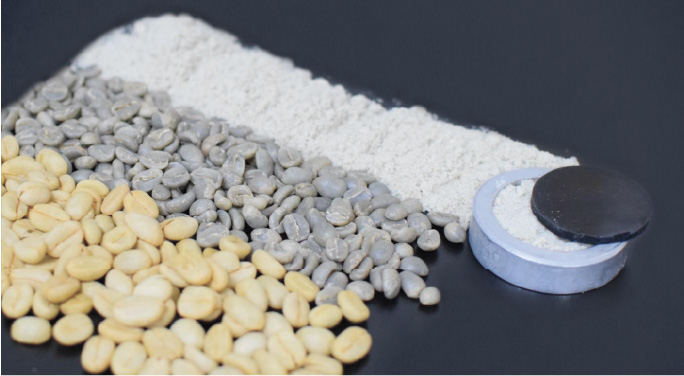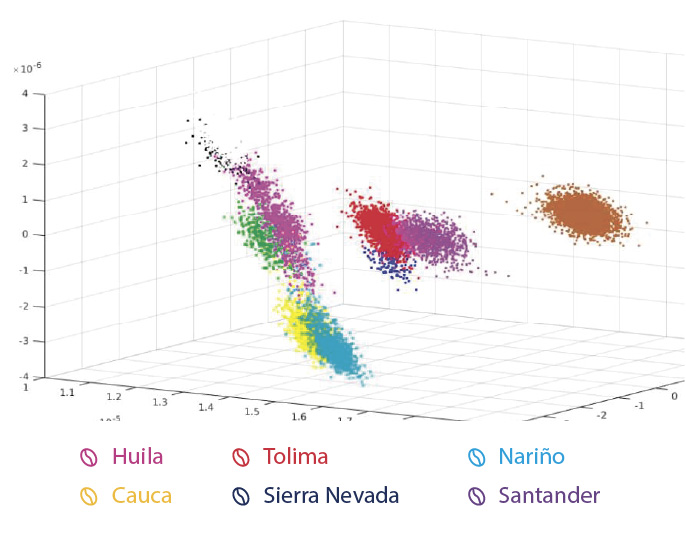Themes of interest and releases


Science, Technology and Innovation for Colombian Coffee Production Cenicafe
The NIRS technique has been consolidated as an optimal secondary analytical method for the determination of different quality parameters in products of the agri-food sector. Among its characteristics are that it allows a quick evaluation of the samples with minimal processing, in addition to achieving the correlation of their properties through various statistical tools (Vásquez et al., 2004).
The technique is based on the principle that, when irradiating with a beam of infrared light of different wavelengths in organic materials, they absorb an amount of energy, which depending on the composition of the food or material to be analyzed, is related to the nature of the bonds and electrostatic charges existing between atoms and molecules; the value can be expressed in terms of reflectance and this is transformed into a characteristic spectrum of the material which reflects its chemical composition (Vásquez et al., 2004). The representation of the absorbed light is reflected in the spectrum that shows the absorbance peaks and the absorption bands at different frequencies depending on the chemical composition of the analyzed sample (Givens et al., 1997).
The National Coffee Research Center – Cenicafe, has led different investigations based on the Near Infrared Spectroscopy Technique – NIRS; One of them are the regional characterizations of the coffee produced in the Colombian coffee zone, in order to contribute to the defense and positioning of the quality of coffee (Villegas H, A.M, et al. 2015).
Cenicafe has developed a classification method using the NIRS technique, which allows predicting the origin of green almond coffee by regions of the main producing areas such as Cauca, Huila, Nariño, Santander, Sierra Nevada and Tolima. The statistical analysis carried out on the spectral information of the discriminant equation allows us to establish a global accuracy level of 74.2%.
